When you hear “summer,” what comes to your mind? Hotness, warmth and humidity. During summer, there is increased duration and intensity of sunshine. Plants that are well taken care of flourish, we get to enjoy our outdoor vacations and have fun at picnics.
How about our animals? How do you keep geese cool during summer?
It is essential to provide them with clean and cool water.
It is common knowledge that during hot seasons (or simply summer!), we sweat more frequently, as it is our body’s way of maintaining homeostasis. By implication, we get dehydrated more often and our body system needs more intake of water, preferably cold water.
The same applies to geese. During summer, they need access to cool water, as this helps them to get through the weather.
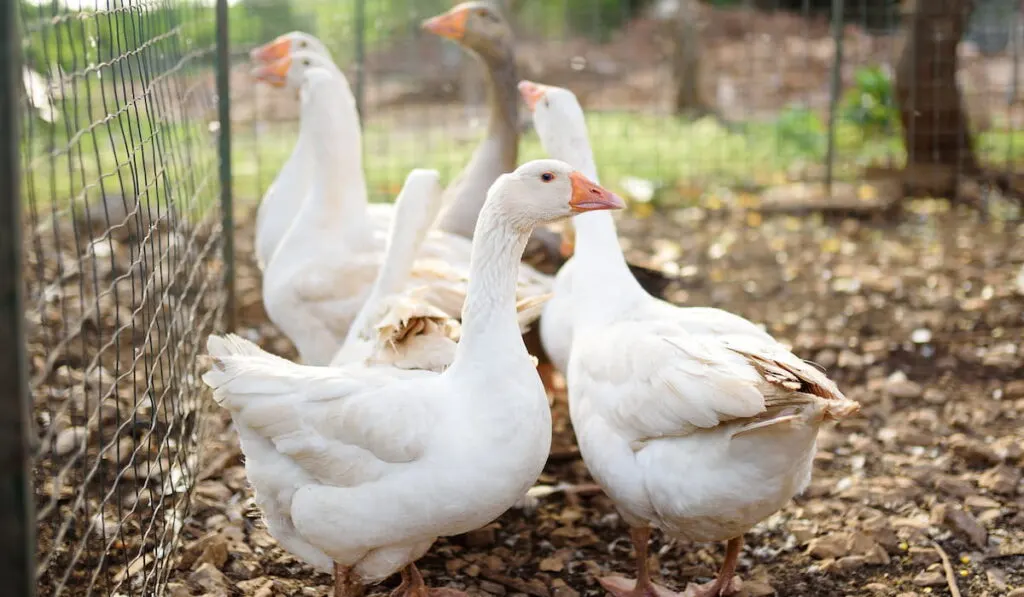
Have you observed that during summer we have longer days and shorter nights? This means geese are likely to drink more volume of water than normal.
Water is basic, but it is not the only factor that keeps them cool. There are several other ways to help your geese get through summer comfortably and these ways will be elaborately discussed; it is going to be an interesting read!
Table of Contents
How to Tell When Geese Are Hot
Earlier, I mentioned that during hot weather conditions, humans tend to sweat more. This lies solely in the biological fact that we have sweat glands.
Generally, birds have no sweat glands, which means you are highly unlikely to see geese sweating since they cannot thermoregulate and lose their body heat by sweating.
So, how do you know they are hot? The following are signs you could see:

1. Panting or Exhaling
Due to the absence of sweat glands, geese cool off by panting. You can try out this practical step: breathe out through your mouth and feel the temperature of air exhaled with your palm. You should notice the air is warm. This is the heat being lost with the air.
Likewise, when geese pant, they can lose heat and stay cool. Hence, once you see your geese panting, you can tell they are hot.
Panting is often accompanied by spreading and quick flapping of wings, as this helps to release heat and cool the air around them.
2. Staying Under a Shade
If you observe that your geese stroll to a cooler area in the shade, it is likely a sign they are hot.

3. Increased Water Intake
If your geese take more water than usual during summer, do not worry too much. Before you think of disease, there is a better chance they are hot. However, if they drink water at an alarming rate, it is advisable to seek a medical opinion from a veterinarian.
4. Weakness and Discomfort
Just as humans feel uncomfortable during hot weather conditions, geese could show signs of discomfort as well.
When a goose is having a difficult time maintaining its body temperature, dehydration could occur, and the goose could get weak. This discomfort could as well affect its eating pattern.
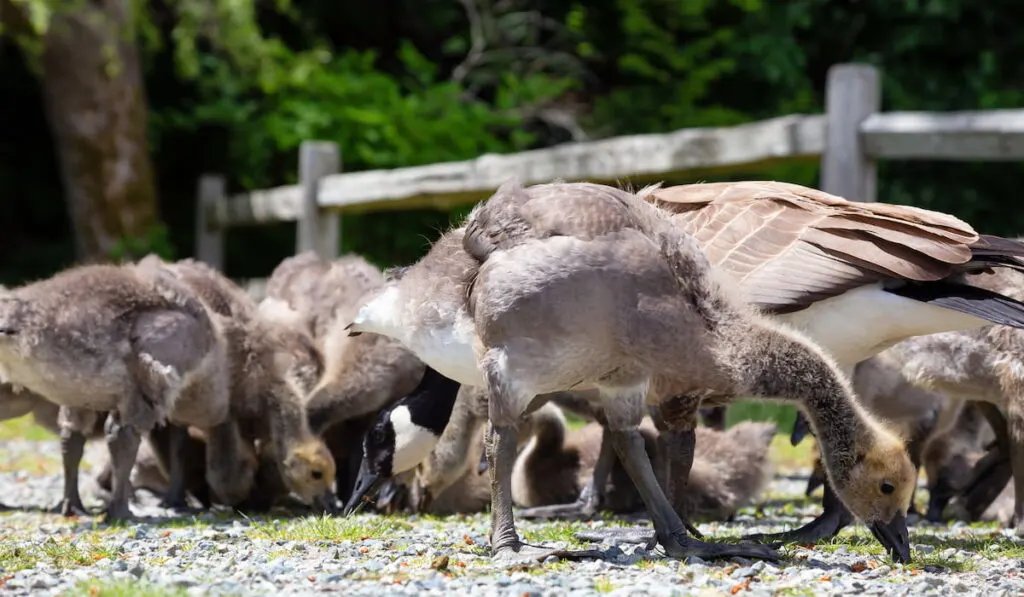
8 Tips for Helping Geese Stay Cool During Summer
Since we can identify when geese are hot, the next thing is to find ways to keep them cool. There are several ways to help them stay cool, and we’ll be looking at 8 tips to go about this.
1. Provide Clean Drinking Water
During summer and hot seasons, geese need plenty of fresh water to cool off and stay hydrated. Mind you, their water intake will be more than the usual volume during winter or other cooler seasons.
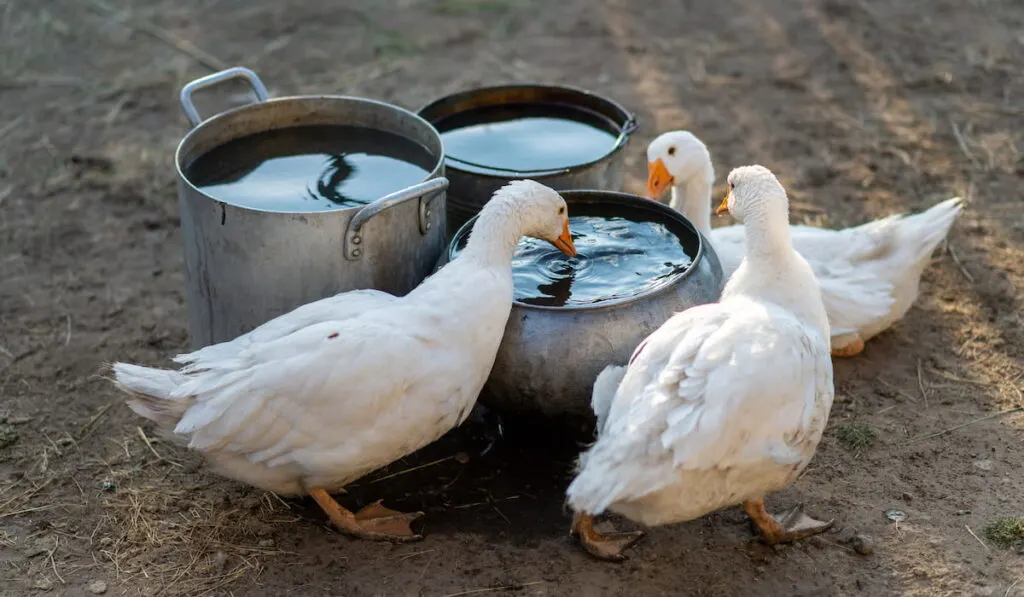
Humans need plenty of water during summer to maintain normal healthy bodily functions, and so do geese. Whether or not there is a pond or stream, it is paramount to change the drinking water more than once daily. This ensures the water remains fresh and safe to drink.
Below are two ways to make drinking water cool.
- Place ice in the water.
- Keep the water in dishes or bowls placed under a shade.
The aforementioned methods help in keeping the water cooler for a longer duration, and that is the goal.
It is advisable as well to have bowls of water in strategic locations that the geese often pass. A good reason for this is that, since a sign of weakness shows geese could be hot, it means they might not have the energy to walk to the central pool or water system. Having bowls of water in different areas of the enclosure gives geese access to water.
2. Provide a Cool Shelter or Shade
Depending on budget, location, desire and the number of geese you are raising, you could set up a shade made of trees or bushes or a shelter that is properly ventilated. The aim is not just to keep them in a safe place but also a well-aerated place.
The shade should be frequently checked in case predators might be hibernating there. Also, the shelter should have openings or windows for natural ventilation.

3. Provide Water for Swimming
A goose is classified as a waterfowl because it spends much of its life on or around water. A good tip is to have multiple shallow pools, but deep enough for the geese to submerge their heads in. The number of pools could largely depend on the number of geese.
An important point to take note of is having the pools under shade. This goes a long way to keep the water cool, as constant exposure to sunlight increases its temperature and makes it warm. In our daily lives, this is similar to leaving bottled water in a car during a hot season; eventually, the water becomes warm.
4. Provision of Frozen Snacks and Fruits
The ideology behind including frozen snacks in the diets of geese is to serve them cold food items that will help them stay cool. Yes, during summer geese deserve nice cold treats too. I mean, anyone would fancy a flavored ice cream when the temperature of the sun is at its peak.
Feeding them frozen foods such as apples, plums, and melons alleviates discomfort.
How does this work? Imagine eating ice cream after a long sunny day. The cool sensations you would feel in your mouth and body are relatable. For several minutes, your body temperature lowers, and you feel more comfortable.
Similarly, feeding geese frozen foods makes them more comfortable when it is hot.
There are two basic ways to prepare your desired frozen food:
- Place the fruit in the freezer before feeding it to the geese.
- Cut the fruits into small-sized bits, place them in an ice cube tray with water and freeze them.
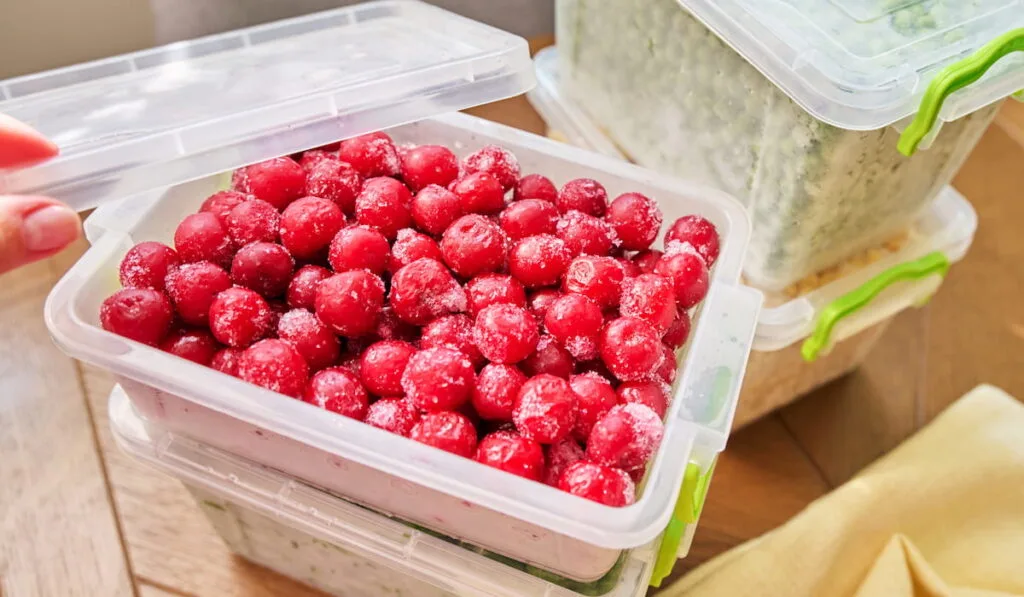
5. Provide a Well-Ventilated Coop
The purpose of ventilation is to ensure the geese feel comfortable and do not have a hard time getting through summer.
A good coop should either have windows or an artificial supply of airflow. In extremely hot conditions, both could be required.
6. Provide Watery Fruits and Vegetables
Frozen fruits? Now, watery fruits? There is no cause for alarm. Watermelon is a common watery fruit that can be safely fed to geese. The water content of watermelon is high and the nutrients it contains nourish the geese.
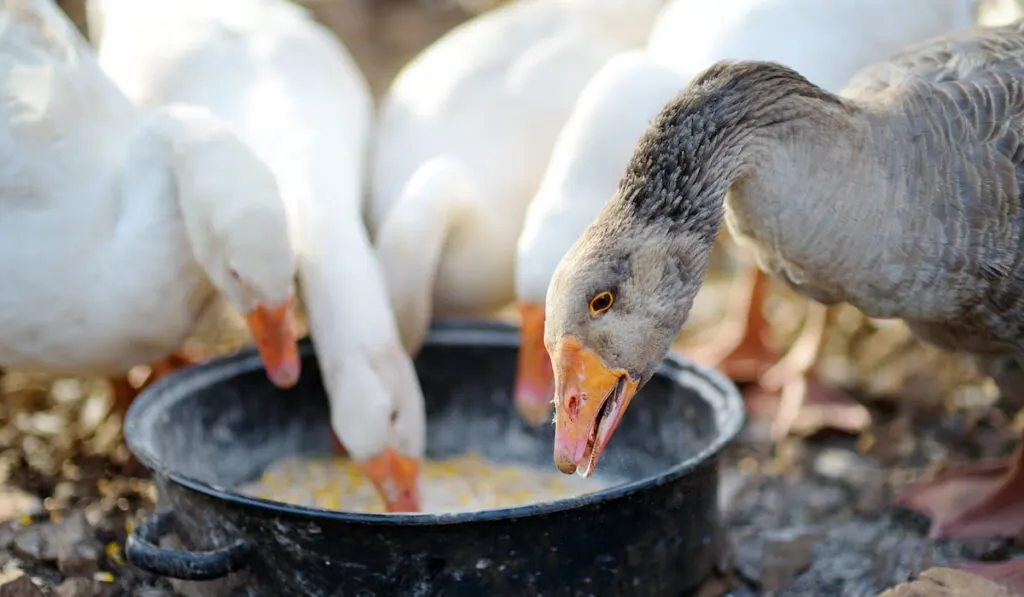
7. Provide an Irrigation Sprinkler System
An irrigation sprinkler, otherwise called a water sprinkler system, is a device that sprays water in the form of rain. Farmers make use of this irrigation method to sprinkle water on their crops.
This method can be adapted to wet the floor of the shelter or enclosure where the geese are kept and even the geese themselves. This helps greatly as a cooling mechanism.
8. Provide Electrolyte Supplements
Normally, as geese pant, heat is gradually lost via the exhalation of warm air and certain internal reactions. However, there is a downside to this; if the panting continues for a long period (hyperventilation), excess carbon dioxide (CO2) will be eliminated.
During metabolic reactions in the body, carbon dioxide is produced. This gas combines with water in the body to form carbonic acid (H2CO3) and hydrogen ions (H+). The reaction goes thus:
CO2 + H2O >>>> H2CO3 + H+
Looking at this, if CO2 is excreted in large amounts, there will be less production of carbonic acid and hydrogen ions. If the concentration of H+ decreases, the pH increases (alkalinity). This leads to a condition called Respiratory Alkalosis, which is characterized by low levels of CO2 in the blood.
The renal system is actively involved in homeostasis. In a bid to maintain the plasma pH, the kidneys reduce the excretion of carbonic acid and hydrogen ions and increase the excretion of sodium and potassium ions. Increased elimination of these two ions leads to electrolyte imbalance. (Note that all of these stem from excessive panting).
By providing electrolyte supplements, the balance would be restored. It is recommended to seek your veterinarian’s opinion about the right electrolyte supplements.

Why Do You Need to Keep Your Geese Cool?
- Keeping geese cool during summer makes them more comfortable and happy.
Summer, which is the warmest season of the four recognized seasons, that is, spring, summer, autumn and winter, is the season you should pay extra attention to your geese. During other seasons, they require maximum care nonetheless.
- There is a lower chance of occurrence of any disease due to the heat wave
- By leveraging the tips listed above, you will be able to explore more ways of paying attention to your geese.
Precautions to Be Taken
- Ensure that the drinking water is clean and regularly replaced.
- The openings, windows and vents of the shelter place or coop should be regularly cleaned to remove dust.
- The bowls that hold water for drinking should be regularly washed.
- Avoid feeding geese moldy food items.
- It is advisable to seek medical opinions from a veterinarian when in doubt.
Final Thoughts
At this juncture, it is noteworthy to state that the body temperature of a goose is around 40°C to 42°C (104°F to 107.6°) Taking care of your geese during summer should be deliberate.
Like all other waterfowl, geese need convenient access to clean water and nice shade.
Water is not negligible, as its deficiency could create a passageway for numerous diseases, both discovered and undiscovered diseases.
Overall, geese can be happy and healthy throughout the four seasons. As long as all the tips are taken into consideration, you should rest assured at having your geese comfortable and healthy all year round.
Resources
I used my personal knowledge of keeping geese and the sources listed below to write this article.
- https://nswschoolanimals.com/poultry-ducks-geese/ducks-geese-environment/
- https://daysferryorganics.wordpress.com/2015/07/24/keeping-your-poultry-cool-in-summer/
- https://thehipchick.com/how-to-keep-ducks-cool-in-summer/
- https://howtohelpanimals.com/birds/ducks/30-what-fruits-can-and-cant-ducks-eat/
- https://www.thehappychickencoop.com/ducks-in-the-summer-heat/
- https://www.hobbyfarms.com/keep-ducks-geese-cool-summer-heat/
- https://plusvet.eu/2022/05/03/electrolyte-therapy-essential-during-heat-stress/
- https://www.sciencedirect.com/topics/veterinary-science-and-veterinary-medicine/respiratory-alkalosis
- https://en.m.wikipedia.org/wiki/Summer
- https://en.m.wikipedia.org/wiki/Irrigation_sprinkler
